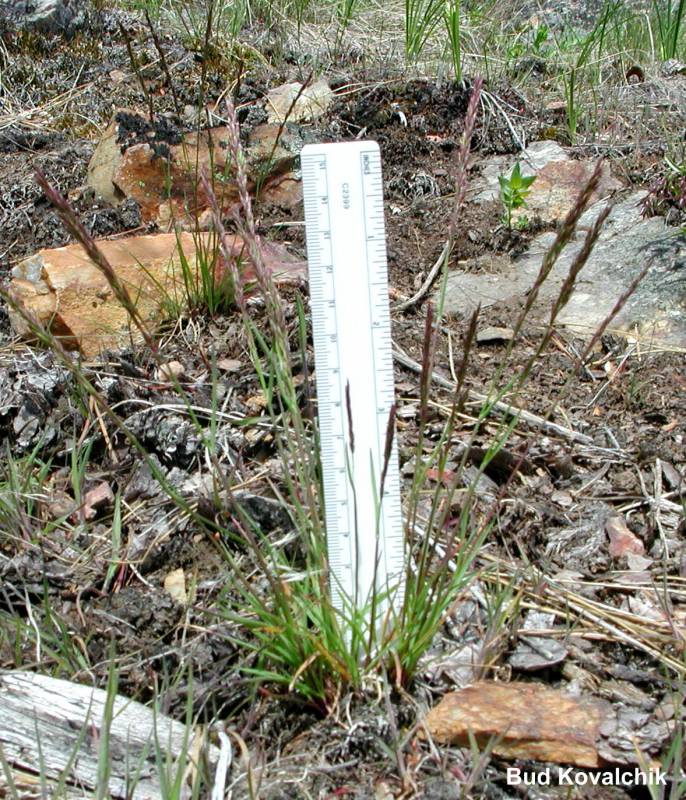Hosted by the University of Washington Herbarium, Burke Museum
Publication: Reliq. Haenk. 1(4-5): 271. 1830.
Origin: Native
Herbarium search: CPNWH
Notes: FNA24: "Poa secunda subsp. secunda comprises several forms or ecotypes which intergrade morphologically and overlap geographically. Its chromosome numbers are centered on 2n = 84. It generally grows in more xeric habitats than subsp. juncifolia; it is also common in alpine habitats. Some of the major variants, and the names that have been applied to them, are: scabrous plants, primarily from west of the Cascade/Sierra Nevada axis (P. scabrella (Thurb.) Benth. ex Vasey, Pine Bluegrass); smoother, large plants extending eastward (P. canbyi (Scribn.) Howell, Canby Bluegrass); tiny, early-spring-flowering plants of stony and mossy ground (P. sandbergii Vasey, Sandberg Bluegrass); and slender, sparse plants, generally of mesic shady habitats, with panicles that remain open (P. gracillima Vasey, Pacific Bluegrass). Alpine plants have been called P. incurva Scribn. & T.A. Williams.
Poa secunda subsp. secunda can be difficult to separate from P. stenantha var. stenantha. It differs in having more rounded lemma keels, hairs between the veins of the lemmas, and calluses that are glabrous or have hairs shorter than 0.2 mm. It also resembles P. tenerrima, but lacks that species' combination of persistently wide, open panicles, very scabrous branches, short-truncate ligules, and very fine foliage."
Last updated 3/23/2012 by David Giblin.

